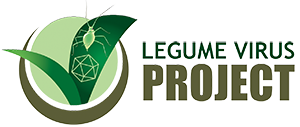
Background
Although managing pea aphid to prevent direct injury to peas and lentils is relatively straightforward, managing this pest as a virus vector can be complicated. Vigilant, early and aggressive treatment of the aphids with insecticides can prevent disease and injury. In most years, however, this is unnecessary because aphid populations, virus in these aphids, or both remain low. During an aphid outbreak or epidemic year, however, virus injury can be severe and widespread in the region. These outbreaks are relatively rare based on a 26 year record. The last such outbreak occurred in 2005. Unfortunately, it is not yet possible to predict whether virus risk is great enough to merit aggressive treatment. This project is developing methods to forecast aphid and virus incidence, provide decision tools for producers to guide in treating for pea aphids, and working to accelerate breeding for virus resistant pea varieties.
Feedback
Please let us know how we're doing. Direct your comments and suggestions about our project and this web site to:
Sanford Eigenbrode
Entomology, Plant Pathology and Nematology (EPPN)
University of Idaho
Team
University of Idaho
Sanford Eigenbrode, Entomologist, Project Director
Ed Bechinski, Entomologist
Alexander Karasev, Virologist
Brad Stokes, Entomologist
Damon Husebye, Entomologist
Ying Wu, Research Support Scientist
Subodh Adhikari, Postdoc in Entomology
Jake Hennessey, Graduate Student in Entomology
Sunil Paudel, Graduate Student in Entomology
Washington State University
Hanu Pappu, Virologist
Diana Roberts, Extension Educator, Spokane County Washington
Bhadra Murthy, Postdoc in Plant Pathology
North Dakota State University
Kevin McPhee, Plant Breeder
Shalu Jain, Postdoc in Plant Breeding
ARS, Prosser, WA
Richard Larsen, Plant Pathologist
Lyndon Porter, Plant Pathologist
USDA-ARS Plant Introduction Station, Pullman, WA
Steve Clement, Project Advisor
Rebecca McGee, Research Geneticist
